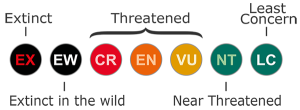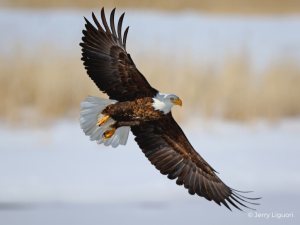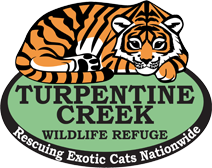
Conversation status refers to the assessment of the risk of extinction faced by a species or ecosystem. It is a crucial metric used by conservationists, scientists, and policymakers to understand the health of biodiversity and guide conservation efforts. This status is determined and evaluated based on different factors, including population size, trends, distribution, and threats. The International Union for Conservation of Nature (IUCN) is a key organization that provides a widely recognized framework for categorizing conservation status.
IUCN Red List Categories
The IUCN Red List of Threatened Species was established in 1964 and has become a globally recognized system that categorizes different species into various levels of risk. It’s often called the “barometer of life,” as it’s a standardized tool to measure the pressures acting on species and communicate the conservation status of a particular species to the world. The main categories are:
- Extinct (EX)
- No individual of the species is known to survive.
- Extinct in the Wild (EW)
- The species survives only in captivity or as a naturalized population well outside its historical range.
- Critically Endangered (CR)
- The species faces an extremely high risk of extinction in the wild.
- Endangered (EN)
- The species is at a very high risk of extinction in the wild.
- Vulnerable (VU)
- The species is likely to become endangered unless circumstances threatening its survival and reproduction improve.
- Near Threatened (NT)
- The species is close to qualifying for Vulnerable status.
- Least Concern (LC)
- The species is widespread and abundant, and there are no immediate threats to its survival.
- Data Deficient (DD)
- There is not enough information available to assess the species’ risk of extinction.
- Not Evaluated (NE)
- The species has not yet been evaluated against the criteria.

Significance of Conservation Status
Understanding the conservation status of a species is important for effective conservation planning and management. It serves as a critical tool for prioritizing efforts and allocating resources to species that need urgent attention. Conservation status assessments are conducted through a combination of field surveys, scientific studies, and data analysis to provide a comprehensive overview of the health of various populations.
Conservation status also acts as an indicator of the overall health of ecosystems. A decline in the status of key species within an ecosystem can signal bigger ecological issues. The natural world is incredibly interconnected, so to maintain the balance of the ecosystem overall, every species has to be protected.
Factors Influencing Conservation Status
Several factors contribute to the conservation status of a species. Some of the key elements include:
- Habitat Loss and Degradation
- Destruction and fragmentation of natural habitats can have a profound impact on different species, limiting their available space, resources, and breeding areas.
- Climate Change
- Changes in climate patterns can affect the distribution and behavior of species, disrupting ecological balance and potentially leading to population declines.
- Overexploitation
- Excessive hunting, fishing, or harvesting of species can deplete populations, pushing them towards endangerment or extinction.
- Pollution
- Contamination of air, water, and soil with pollutants can harm both species and their habitats, posing a significant threat to biodiversity.
- Invasive Species
- The introduction of non-native species can disrupt ecosystems by outcompeting or predating on native species, leading to population declines.
- Disease
- The spread of diseases, especially those introduced by humans or other species, can devastate populations that lack immunity.
- Global Trade
- International trade in wildlife and plants can lead to overexploitation and illegal activities, contributing to the decline of species.
Conservation Success Stories
While many species face significant challenges, there have been notable success stories in conservation efforts. The recovery of certain species from the brink of extinction demonstrates the impact of dedicated conservation initiatives. Examples include the recovery of the bald eagle in the United States, the increase in the black rhinoceros population in Namibia, and the conservation efforts that saved the California condor from imminent extinction. The IUCN Red List even includes the IUCN Green Status of Species, which assesses the recovery of different populations and measures their success.

These success stories showcase the importance of proactive conservation measures, including habitat protection, anti-poaching efforts, and some captive breeding programs. They also highlight the resilience of some species when provided with the right conditions and conservation interventions.
Challenges in Conservation Status Assessment
Assessing the conservation status of species is a complex task, and several challenges must be addressed to ensure accuracy and reliability. Some of these challenges include:
- Data Gaps
- Lack of comprehensive data can hinder accurate assessments, leading to species being classified as Data Deficient or Not Evaluated.
- Taxonomic Challenges
- Identifying and classifying species accurately can be challenging, particularly in less-studied or biodiverse regions.
- Cryptic Species
- Some species may have hidden populations or exhibit cryptic behaviors, making it difficult to estimate their numbers accurately.
- Dynamic Ecosystems
- Ecosystems are dynamic, and species’ populations can fluctuate naturally. Distinguishing between natural fluctuations and human-induced threats requires careful analysis.
- Climate Change Uncertainty
- Predicting the long-term effects of climate change on species and ecosystems introduces uncertainty into conservation assessments.
The Role of Conservation Organizations
Conservation organizations play a pivotal role in assessing and addressing the conservation status of species. They conduct research, implement conservation programs, and collaborate with governments, communities, and other interested parties to protect biodiversity. The work of organizations such as the World Wildlife Fund (WWF), Conservation International, and the Wildlife Conservation Society demonstrates the global commitment to safeguarding the planet’s diversity.

These organizations often work together on initiatives that encompass habitat conservation, anti-poaching efforts, community engagement, and sustainable development practices. By combining scientific expertise with on-the-ground conservation efforts, these organizations contribute significantly to preserving the world.
Global Conservation Challenges
Despite ongoing conservation efforts, numerous challenges persist at a global scale. Deforestation, climate change, illegal wildlife trade, and habitat degradation continue to threaten countless species. International collaboration is essential to address these challenges effectively, as many species migrate across borders and require coordinated conservation strategies.
Politics and public awareness also play critical roles in advancing global conservation goals. Advocacy for stronger environmental policies, sustainable practices, and responsible consumption can contribute to the broader effort to protect biodiversity.
The Importance of Community Involvement
Engaging local communities is fundamental to the success of conservation initiatives. Involving communities in conservation efforts fosters a sense of ownership and ensures that initiatives align with local needs and values. Locals often have knowledge that would contribute valuable insights into ecosystems and species behavior. This collaborative approach enhances programs and promotes sustainable development that benefits both people and the environment.

The need for conservation efforts in the world has never been more important than it is today. As more and more beautiful species leave this world for good, it’s up to us humans to solve the problems we have caused.
Sources:
https://australian.museum/learn/animals/conservation-status-what-does-it-mean/
https://www.iucnredlist.org/about/background-history
https://www.britannica.com/topic/IUCN-Red-List-of-Threatened-Species
https://www.nwf.org/Our-Work/Wildlife-Conservation/Success-Stories
https://www.conservation.org/about
https://www.worldwildlife.org/about
